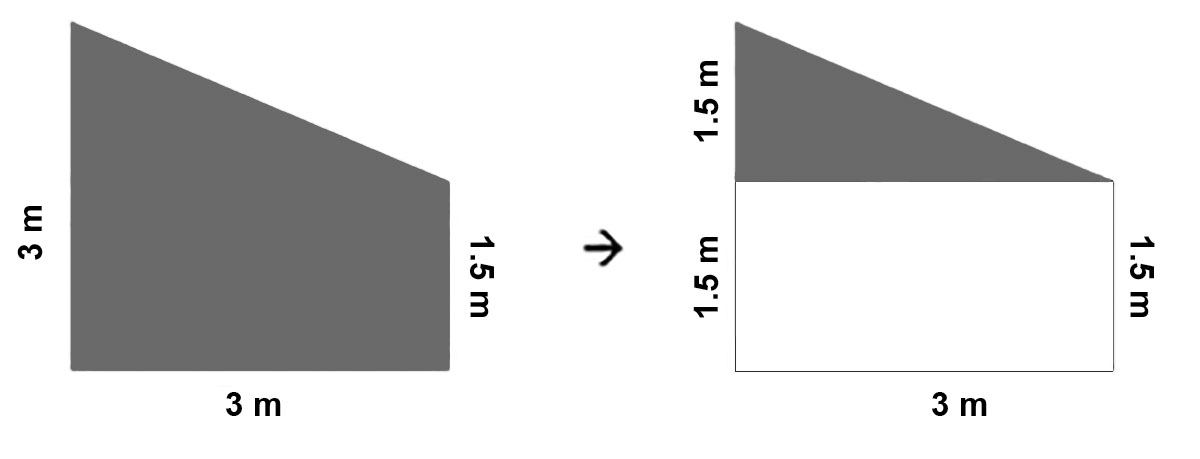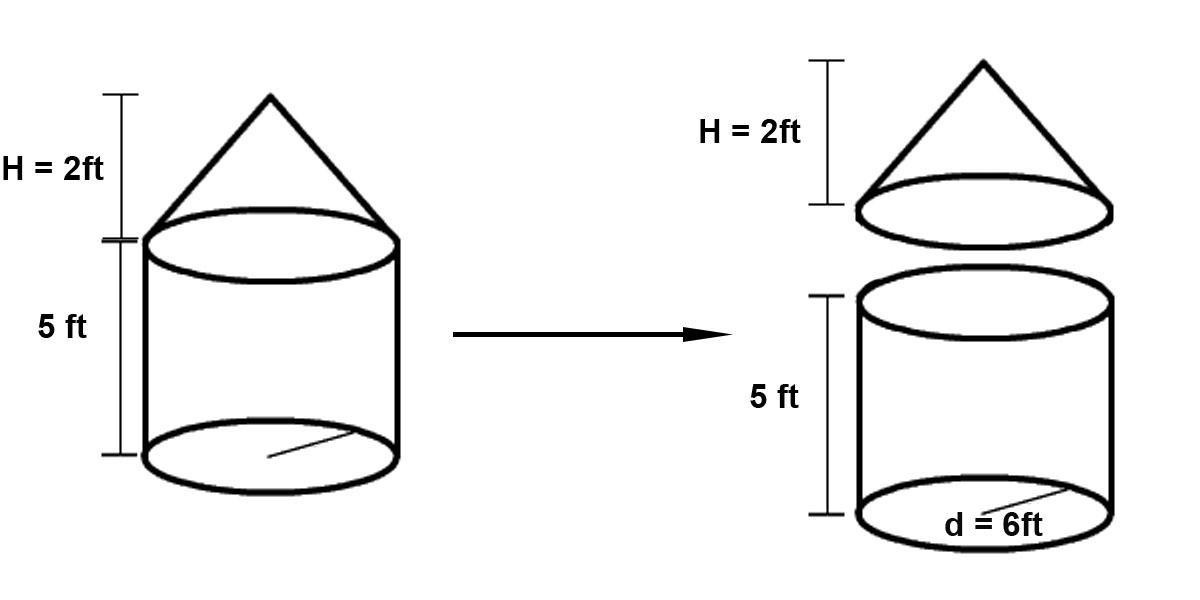Basic Geometry – How to find the Area of Complex Shapes
- Posted by Brian Stocker
- Date October 9, 2017
- Comments 2 comments
How to Find the Area of Complex Shapes
Complex figures can be divided into several smaller shapes where the perimeter or area formula is known, then added.
Example – Composite 2-D shapes
To determine the area of any composite figure, simply ADD the areas of each component basic figure. Be sure to write your final answer with square units.
Determine the area of the given shape.
The original shape can be redrawn as a rectangle and a triangle. Rectangles have opposite sides that are congruent (exactly the same).
Area Composite = Area Triangle + Area Rectangle
Area Triangle = (1/2)(Base)(Height) = (1/2)(3m)(1.5m) = 2.25 m2
Area Rectangle = (Base)(Height) = (3m)(1.5m) = 4.5 m2
Area Composite = (2.25m2) + (4.5m2) = 6.75 m2
How to find the area of a complex figure
To determine the surface area of any composite solid, simply add the surface areas of each component basic solid. You must also subtract the area of any internal face. Be sure to write your final answer with square units.
Ex. Determine the surface area of the given shape. Leave the final answer in terms of pi.
The original shape can be redrawn as a cylinder and a cone. We will have to subtract the area of the circle where the figures meet from each surface area equation because they are “inside” the solid.
SurfaceArea Composite = S.Area Cone + S.Area Cylinder
S.Area Cone = (Base Area)+(1/2)(Perimeter)(Height) = (1/2)(dπ)(h) = (1/2)(6π)(2) = 6π ft2
S.Area Cylinder = 2(Base Area)+(Perimeter)(Height) = (πr2)+(dπ)(h) = (π32)+(6π)(5) = 39π ft2
S.Area Composite = (6π ft2) + (39π ft2) = 45π ft2
Most Popular Geometry Questions
Common geometry questions on on standardized tests :
- Solve for the missing angle or side
- Finding the area or perimeter of different shapes (e.g. triangles, rectangles, circles)
- Problems using the Pythagorean Theorem
- Calculate properties of geometric shapes such as angles, right angles or parallel sides
- Calculating volume or surface area of complex shapes for example spheres, cylinders or cones
- Solve geometric transformations such as rotation, translation or reflections
Most Common Geometry Mistakes on a Test
- Not clearly labeling or identifying the given and unknown information in a problem
- Not understanding the properties and definitions of basic geometric figures (e.g. line, angle, triangle, etc.)
- Incorrectly using basic formulas (e.g. area of a triangle, Pythagorean theorem)
- Incorrectly interpreting geometric diagrams
- Not understanding the relationship between parallel lines and transversals
- Not understanding the relationship between angles and their degree measures
- Not understanding the relationship between perimeter and area
Date Published: Monday, October 9th, 2017
Date Modified: Monday, June 19th, 2023
Got a Question? Email me anytime - Brian@test-preparation.ca
You may also like

Listening Comprehension Practice – Solving a Problem

Scientific Reasoning Practice Questions
The probability of an event is given by – The Number Of Ways Event A Can Occur The total number Of Possible Outcomes So for example if there are 4 red balls and 3 yellow balls in a bag, the probability …



2 Comments
How is not interpreting diagrams a mistake? examples?
I think it refers to not interpreting the diagram correctly.